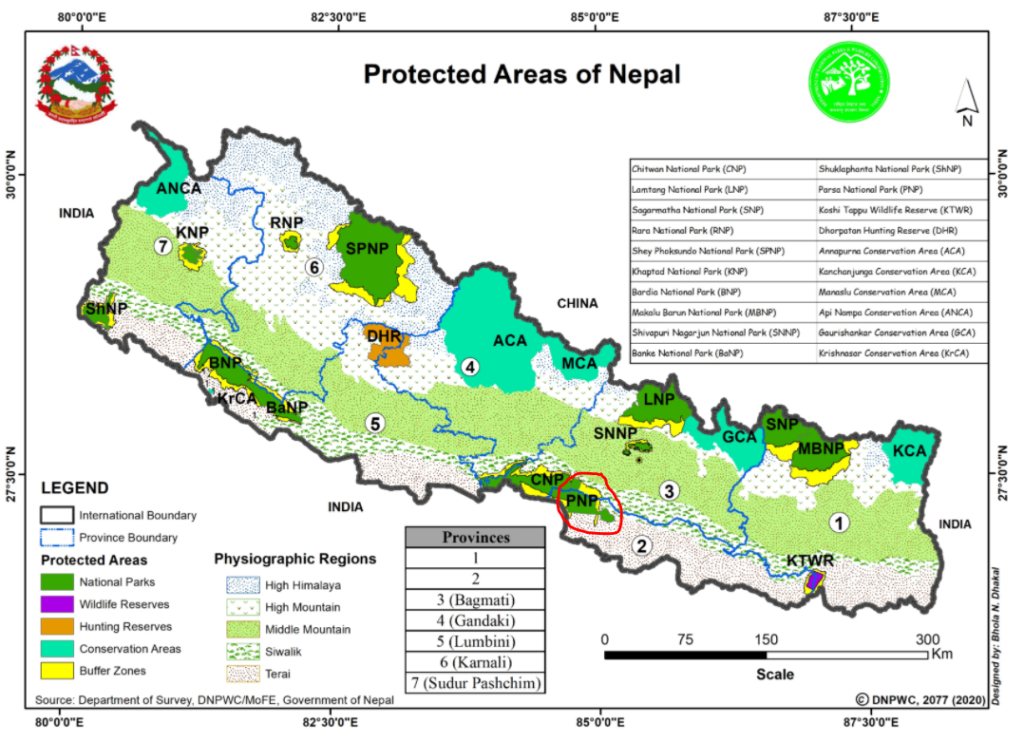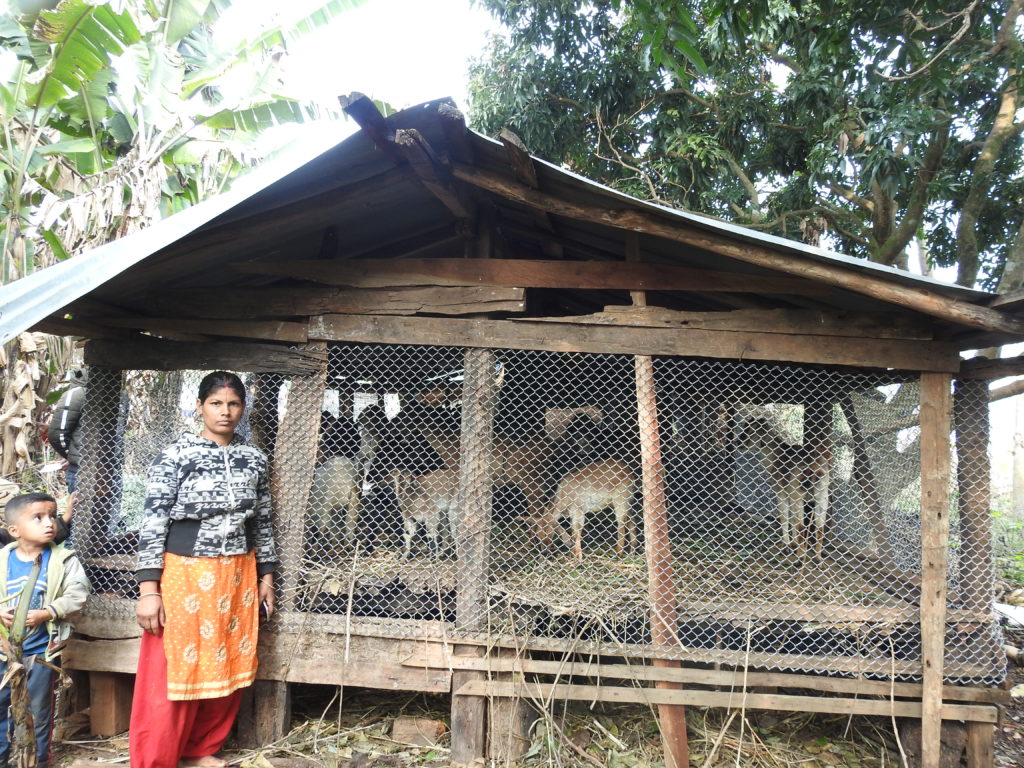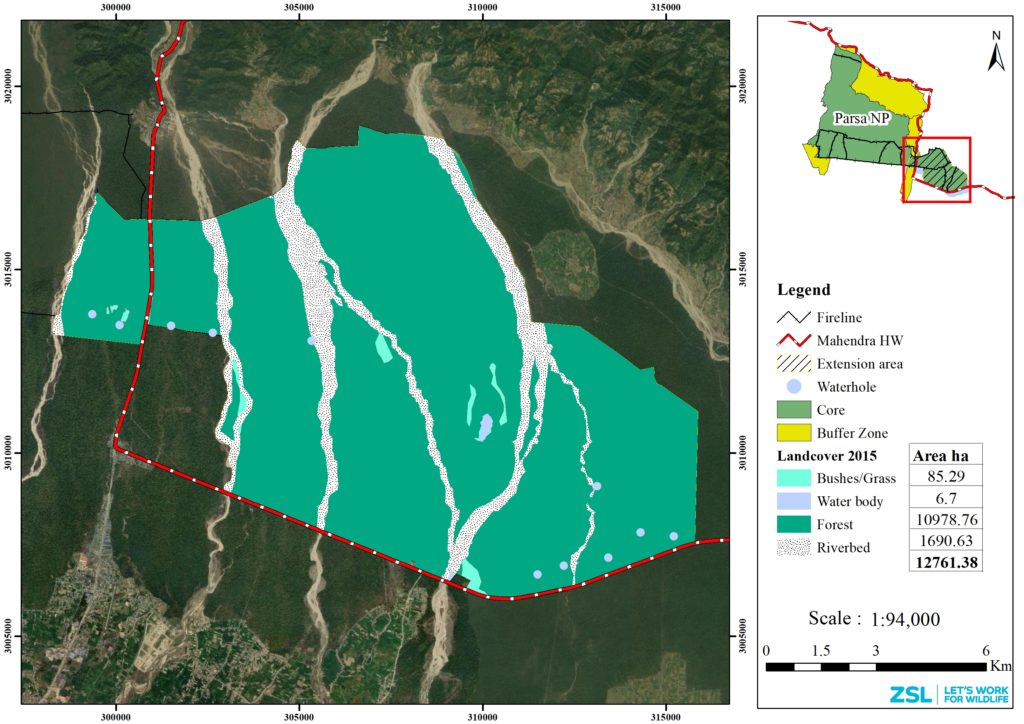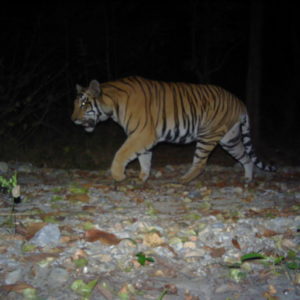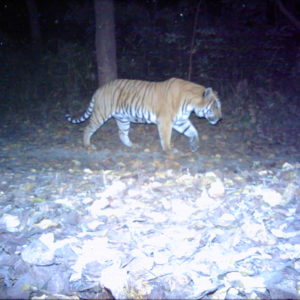Dedicated conservation efforts have resulted in Parsa National Park becoming one of the most important tiger recovery sites in Nepal.
The history
Since 2015 WildCats has been funding work to build a tiger stronghold in Parsa National Park (PNP) through ZSL Nepal. During this project period, Parsa was upgraded from a Wildlife Reserve to a National Park granting it full protection status. The decision to upgrade the site was made by the Government of Nepal in 2017 after substantial growth was recorded of priority species populations. Improved infrastructure was also a key element in the decision following substantial investments from ZSL, WildCats, and other partners. Parsa benefitted from new patrol roads, watchtowers, and tourism infrastructure helping to build conservation support from local communities.
Over the last 6 years, WildCats has helped to fund the monitoring of tigers and their prey in PNP through camera trapping and transect surveys. Work has also been done to help reduce poaching threats to tigers by strengthening anti-poaching measures through SMART* training and patrolling support. These dedicated efforts have resulted in PNP seeing over a 250% increase in tiger numbers making Parsa one of the most important tiger recovery sites in Nepal.
Current work
PNP and neighboring Chitwan National Park are currently home to 111 tigers and have the carrying capacity for an additional 64. With an ever-growing tiger population, a future-focused approach must be taken to allow the population of tigers in this area to increase beyond this additional 64.
Consequently, more suitable habitats and dispersal corridors are needed to support the increasing numbers. To meet these needs, ZSL has been focusing on population expansion and dispersal through an extended area to the east of PNP. This extension is being put through robust biological and habitat monitoring to inform conservation management of the landscape. ZSL Nepal is also working with local communities to foster support for tiger conservation in the landscape and allow for the participatory design of strategies to mitigate human-tiger conflict.
Progress in the first half of 2021
Habitat assessment
With a vision to secure and improve the habitat in the extension area of PNP, a study on the distribution of habitat types has been conducted. The area is estimated to be made up of 86% forest, 13% riverbeds, 0.67% bushes and grass, and 0.05% general water bodies.
Construction of a new waterhole
Provision of water to wildlife is crucial in the PNP as the landscape is mostly dry. The project team will therefore be constructing a waterhole close to the areas of proposed grassland management.
Supporting the increase in tiger prey populations
A strategic location has already been identified for an additional 20 ha of grassland habitat within the extended area to support increasing numbers of tiger prey.
Wildlife dispersal monitoring
Remotely activated cameras have been deployed in 7 different strategic locations within the extended area since February this year. These cameras have captured 22 mammal species including the globally endangered Bengal tiger, Asian wild elephant, striped hyena, and dhole. Other species included spotted deer, sambar deer, barking deer, wild boar, Indian bison, large Indian civet, Asian palm civet, etc. Tigers were recorded on every camera in the 7 different strategic locations.
*Spatial Monitoring and Reporting Tool

